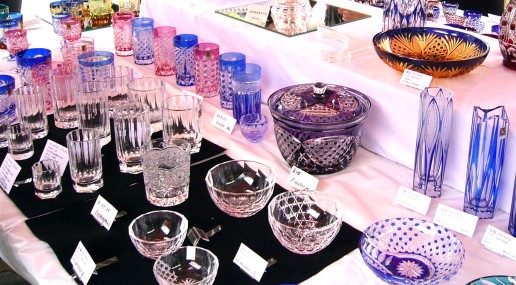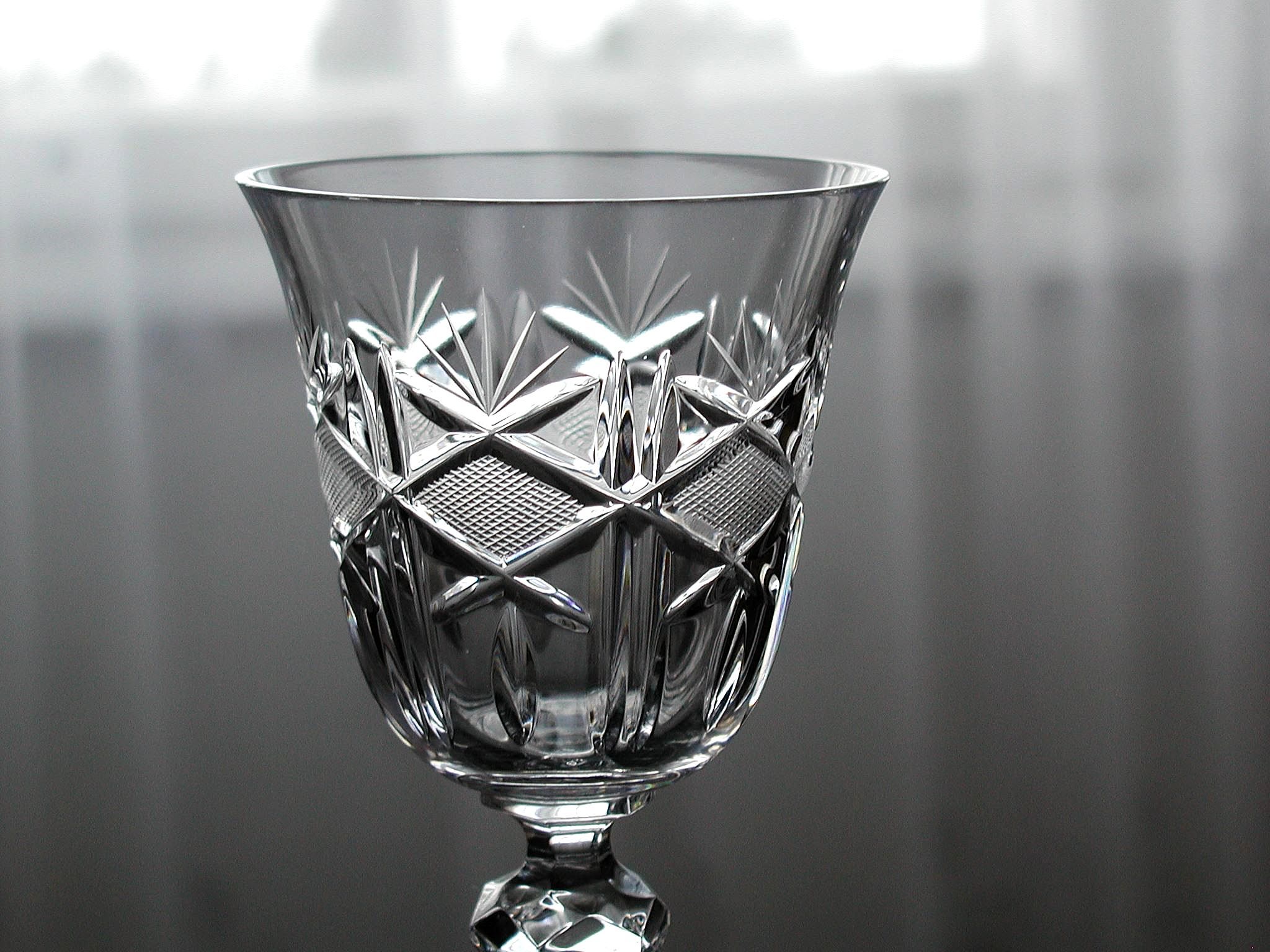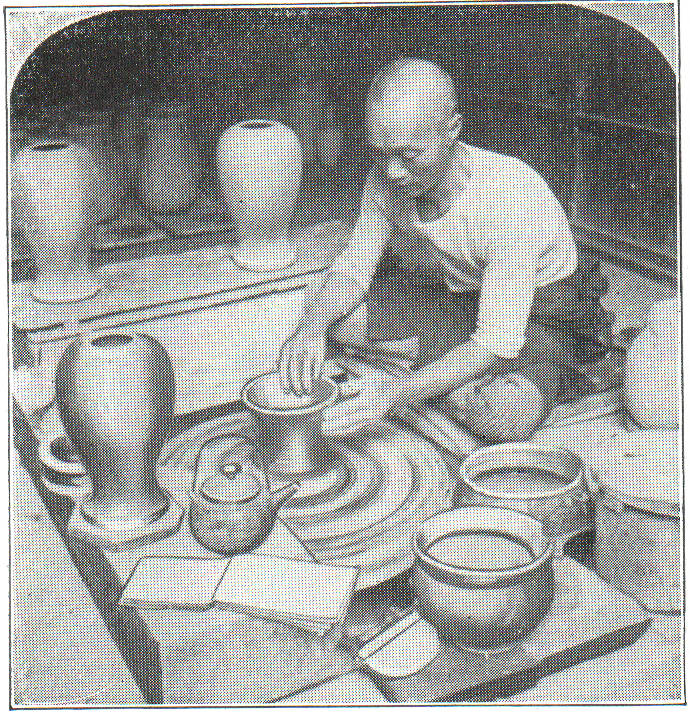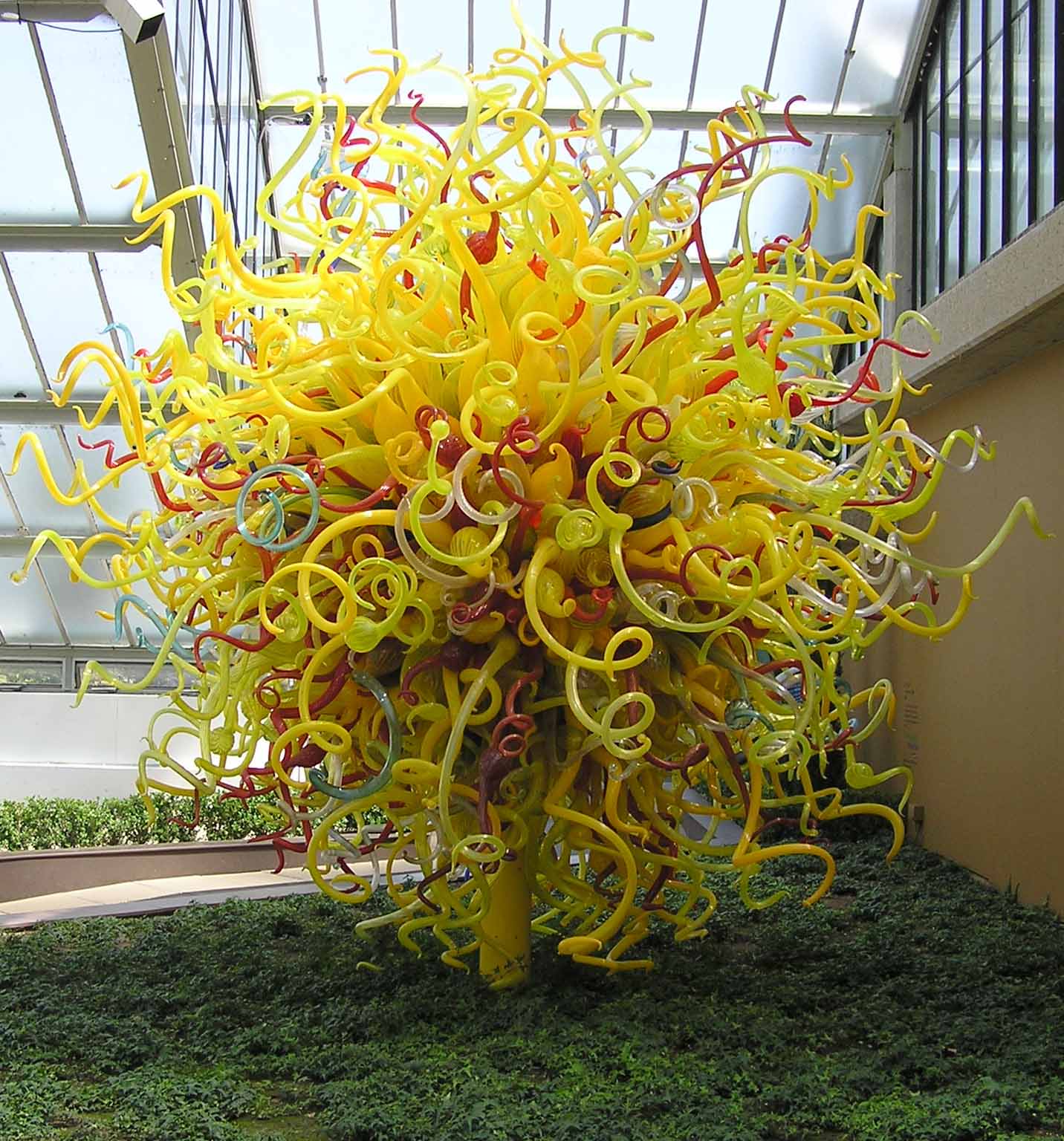|
Edo Kiriko
is a style of cut glass, now a traditional Japanese craft. It originated in Edo (modern-day Tokyo) during the 19th century and is renowned for its clear, intricately cut glass displaying bold geometric patterns. History Edo kiriko was first produced in 1834 by Kagaya Kyūbei, a glassware merchant in Edo. In 1873, a Western-style glassworks was established in Shinagawa, Tokyo, and in 1881 British glass expert Emmanuel Hauptmann was invited to Japan to introduce advanced European techniques. These developments led to the refinement of Edo kiriko, and its pieces were subsequently showcased at international expositions, earning global recognition. As the techniques for cutting and polishing developed, the quality of Edo kiriko improved steadily, reaching the height of its popularity in the early years of the 20th century. Manufacture The manufacturing process of Edo kiriko involves six main stages, which are typically carried out in a single, continuous process. First, the colored ... [...More Info...] [...Related Items...] OR: [Wikipedia] [Google] [Baidu] |
Cut Glass
Cut glass or cut-glass is a technique and a style of decorating glass. For some time the style has often been produced by other techniques such as the use of Molding (process), moulding, but the original technique of cutting glass on an abrasive wheel is still used in luxury products. On glassware vessels, the style typically consists of furrowed faces at angles to each other in complicated patterns, while for lighting fixtures, the style consists of flat or curved facets on small hanging pieces, often all over. Historically, cut glass was shaped using "coldwork" techniques of grinding or drilling, applied as a secondary stage to a piece of glass made by conventional processes such as glassblowing. Today, the glass is often mostly or entirely shaped in the initial process by using a mould (pressed glass), or imitated in clear plastic. Traditional hand-cutting continues, but gives a much more expensive product. Lead glass has long been misleadingly called "crystal" by the indu ... [...More Info...] [...Related Items...] OR: [Wikipedia] [Google] [Baidu] |
Japanese Craft
Traditional in Japan have a long tradition and history. Included in the category of traditional crafts are handicrafts produced by an individual or a group, as well as work produced by independent studio artists working with traditional craft materials and/or processes. History Japanese craft dates back to when humans settled on its islands. Handicrafting has its roots in the rural crafts – the material-goods necessities – of ancient times. Handicrafters used naturally- and indigenously occurring materials. Traditionally, objects were created to be used and not just to be displayed and thus, the border between craft and art was not always very clear. Crafts were needed by all strata of society and became increasingly sophisticated in their design and execution. Craft had close ties to folk art, but developed into fine art, with a number of aesthetic schools of thought, such as , arising. Craftsmen and women therefore became artisans with increasing sophistication. However, ... [...More Info...] [...Related Items...] OR: [Wikipedia] [Google] [Baidu] |
Tokyo
Tokyo, officially the Tokyo Metropolis, is the capital of Japan, capital and List of cities in Japan, most populous city in Japan. With a population of over 14 million in the city proper in 2023, it is List of largest cities, one of the most populous urban areas in the world. The Greater Tokyo Area, which includes Tokyo and parts of six neighboring Prefectures of Japan, prefectures, is the most populous metropolitan area in the world, with 41 million residents . Lying at the head of Tokyo Bay, Tokyo is part of the Kantō region, on the central coast of Honshu, Japan's largest island. It is Japan's economic center and the seat of the Government of Japan, Japanese government and the Emperor of Japan. The Tokyo Metropolitan Government administers Tokyo's central Special wards of Tokyo, 23 special wards, which formerly made up Tokyo City; various commuter towns and suburbs in Western Tokyo, its western area; and two outlying island chains, the Tokyo Islands. Although most of the w ... [...More Info...] [...Related Items...] OR: [Wikipedia] [Google] [Baidu] |
Shinagawa
is a special ward in the Tokyo Metropolis in Japan. The Ward refers to itself as Shinagawa City in English. The Ward is home to ten embassies. , the Ward had an estimated population of 380,293 and a population density of 16,510 persons per km2. The total area is 22.84 km2. ''Shinagawa'' is also commonly used to refer to the business district around Shinagawa Station, which is not in Shinagawa Ward. This Shinagawa is in the Takanawa and Konan neighborhoods of Minato Ward, directly north of Kita-Shinagawa. Geography Shinagawa Ward includes natural uplands and lowlands, as well as reclaimed land. The uplands are the eastern end of the Musashino Terrace. They include Shiba-Shirokanedai north of the Meguro River, Megurodai between the Meguro and Tachiai Rivers, and Ebaradai south of the Tachiai River. The Ward lies on Tokyo Bay. Its neighbors on land are all special wards of Tokyo: Kōtō to the east, Minato to the north, Meguro to the west, and Ōta to the south. ... [...More Info...] [...Related Items...] OR: [Wikipedia] [Google] [Baidu] |
Satsuma Kiriko
is a style of cut glass, now a traditional Japanese craft. It was manufactured by the Satsuma clan from the final years of the Edo period to the beginning of the Meiji period (1868–1912). History Shimazu Narioki (1791–1859), a feudal lord of the Edo period, invited glass craftsmen from Edo (now Tokyo) to produce Satsuma kiriko. The manufacturing methods were based on foreign books from Nagasaki. Narioki’s son Shimazu Nariakira introduced it into his Shuseikan Enterprise, the first western-style industrial enterprise in Japan, with factories that produced steel, textiles, and other products. The cut glass was very advanced craftwork. Nariakira was extremely fond of it, and sent it to other feudal lords as presents. After his death, the manufacture of Satsuma kiriko was discontinued in the early Meiji period because of financial difficulties, damage to the factory in the bombardment of Kagoshima, and disturbances during the Satsuma Rebellion. The craftsmen and skills dispers ... [...More Info...] [...Related Items...] OR: [Wikipedia] [Google] [Baidu] |
Flashed Glass
Flashed glass, or flash glass, is a type of glass created by coating a colorless gather of glass with one or more thin layers of colored glass. This is done by placing a piece of melted glass of one color into another piece of melted glass of a different color and then blowing the glass. As well as its use for glass vessels, it has been very widely used in making stained glass since medieval times, often in combination with " pot metal glass", made by colouring molten glass, giving colour all through the sheet. The colored glass can be partly or completely etched away (through exposure to acid or via sandblasting), resulting in colorless spots where the colored glass has been removed. Flashed glass can be made from various colors of glass. A finished piece of flashed glass appears translucent. See also * Cased glass * Glass engraving * Satsuma Kiriko cut glass * Stained glass Stained glass refers to coloured glass as a material or art and architectural works create ... [...More Info...] [...Related Items...] OR: [Wikipedia] [Google] [Baidu] |
Glass Engraving
Engraved glass is a type of decorated glass that involves shallowly engraving the surface of a glass object, either by holding it against a rotating wheel, or manipulating a "diamond point" in the style of an engraving burin. It is a subgroup of glass art, which refers to all artistic glass, much of it made by "hot" techniques such as moulding and blowing melting glass, and with other "cold" techniques such as glass etching which uses acidic, caustic, or abrasive substances to achieve artistic effects, and cut glass, which is cut with an abrasive wheel, but more deeply than in engraved glass, where the engraving normally only cuts deeply enough into the surface to leave a mark. Usually the engraved surface is left "frosted" so a difference is visible, while in cut glass the cut surface is polished to restore transparency. Some pieces may combine two or more techniques. There are several different techniques of glass engraving. It has been practised since ancient times, including ... [...More Info...] [...Related Items...] OR: [Wikipedia] [Google] [Baidu] |
History Of Glass
The history of glass-making dates back to at least 3,600 years ago in Mesopotamia. However, most writers claim that they may have been producing copies of glass objects from Egypt. Other archaeological evidence suggests that the first true glass was made in coastal north Syria, Mesopotamia or Egypt. The earliest known glass objects, of the mid 2,000 BCE, were beads, perhaps initially created as the accidental by-products of metal-working (slags) or during the production of faience, a pre-glass vitreous material made by a process similar to glazing. Glass products remained a luxury until the disasters that overtook the late Bronze Age civilizations seemingly brought glass-making to a halt. Development of glass technology in India may have begun in 1,730 BCE. From across the former Roman Empire, archaeologists have recovered glass objects that were used in domestic, industrial and funerary contexts. Anglo-Saxon glass has been found across England during archaeological excava ... [...More Info...] [...Related Items...] OR: [Wikipedia] [Google] [Baidu] |
Glass Art
Glass art refers to individual works of art that are substantially or wholly made of glass. It ranges in size from monumental works and installation pieces to wall hangings and windows, to works of art made in studios and factories, including glass jewelry and tableware. As a decorative and functional medium, glass was extensively developed in Ancient Egypt, Egypt and Assyria. Glassblowing was perhaps invented in the 1st century BC, and featured heavily in Roman glass, which was highly developed with forms such as the cage cup for a luxury market. Islamic glass was the most sophisticated of the early Middle Ages. Then the builders of the great Norman architecture, Norman and Gothic architecture, Gothic cathedrals of Europe took the art of glass to new heights with the use of stained glass windows as a major architectural and decorative element. Glass from Murano, in the Venetian Lagoon, (also known as Venetian glass) is the result of hundreds of years of refinement and inventi ... [...More Info...] [...Related Items...] OR: [Wikipedia] [Google] [Baidu] |
Japanese Crafts
Traditional in Japan have a long tradition and history. Included in the category of traditional crafts are handicrafts produced by an individual or a group, as well as work produced by independent studio artists working with traditional craft materials and/or processes. History Japanese craft dates back to when humans settled on its islands. Handicrafting has its roots in the rural crafts – the material-goods necessities – of ancient times. Handicrafters used naturally- and indigenously occurring materials. Traditionally, objects were created to be used and not just to be displayed and thus, the border between craft and art was not always very clear. Crafts were needed by all strata of society and became increasingly sophisticated in their design and execution. Craft had close ties to folk art, but developed into fine art, with a number of aesthetic schools of thought, such as , arising. Craftsmen and women therefore became artisans with increasing sophistication. However, w ... [...More Info...] [...Related Items...] OR: [Wikipedia] [Google] [Baidu] |









